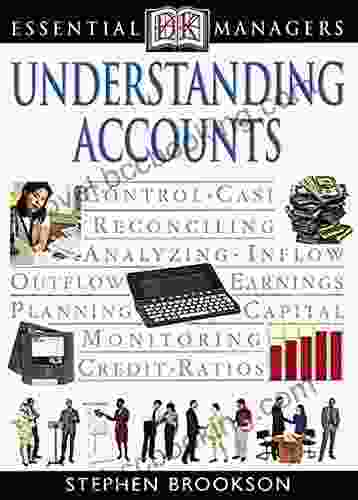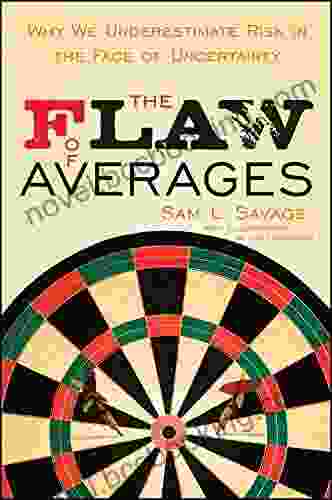Why We Underestimate Risk in the Face of Uncertainty: Unmasking the Hidden Factors

In the realm of decision-making, risk perception plays a pivotal role. It influences how we evaluate and respond to potential dangers or threats. However, research has consistently shown that people often underestimate risks, especially in the face of uncertainty. This phenomenon can lead to poor decisions and unfortunate consequences.
4.4 out of 5
| Language | : | English |
| File size | : | 7746 KB |
| Text-to-Speech | : | Enabled |
| Screen Reader | : | Supported |
| Enhanced typesetting | : | Enabled |
| Word Wise | : | Enabled |
| Print length | : | 416 pages |
| Lending | : | Enabled |
This article delves into the complex world of risk perception and explores the reasons why we tend to underestimate risks in uncertain situations. We will uncover the cognitive biases, emotional influences, and situational factors that shape our risk assessments.
Cognitive Biases
Our minds often rely on mental shortcuts or heuristics to make quick and efficient judgments. However, these heuristics can introduce cognitive biases that can distort our risk perceptions.
- Availability heuristic: We tend to overestimate the likelihood of events that are easily recalled or vivid in our minds, even if they are statistically unlikely.
- Optimism bias: We have a tendency to see ourselves as less vulnerable to negative events than others. This bias can lead us to underestimate the risks associated with our own actions or decisions.
- Confirmation bias: We seek out information that confirms our existing beliefs and ignore or discount evidence that contradicts them. This can lead us to underestimate risks that challenge our prior assumptions.
- Anchoring bias: We are influenced by the first piece of information we receive about a risk. This can lead us to adjust our risk assessments insufficiently when presented with new information.
Emotional Influences
Emotions can also significantly impact our risk perceptions. Fear, anxiety, or anger can cloud our judgment and lead us to overestimate risks. On the other hand, positive emotions such as optimism or hope can lead us to underestimate risks.
- Fear and anxiety: These emotions can amplify perceived risks and make us more risk-averse.
- Optimism and hope: These emotions can suppress perceived risks and lead us to take more risks.
- Affect heuristic: We rely on our emotional responses to judge the likelihood of events. This can lead to biases if our emotions are not based on objective information.
Situational Factors
The context in which we make risk assessments also plays a role in our perceptions. Factors such as time pressure, stress, or social influences can affect our ability to accurately assess risks.
- Time pressure: When we have limited time to make a decision, we may rely more on heuristics and intuitive judgments, which can lead to errors.
- Stress: Stress can impair our cognitive abilities and make us more susceptible to biases.
- Social influences: The opinions and behaviors of others can influence our risk perceptions. We may underestimate risks if others around us seem unconcerned.
Understanding the factors that contribute to risk underestimation is crucial for making informed and rational decisions. By recognizing and mitigating the cognitive biases, emotional influences, and situational factors that can distort our risk perceptions, we can improve our ability to assess risks accurately.
This awareness can help us make better decisions in various aspects of our lives, from financial planning and health choices to safety practices and public policy. By unmasking the hidden factors that lead to risk underestimation, we can enhance our risk management strategies and navigate the uncertain future with greater confidence.
4.4 out of 5
| Language | : | English |
| File size | : | 7746 KB |
| Text-to-Speech | : | Enabled |
| Screen Reader | : | Supported |
| Enhanced typesetting | : | Enabled |
| Word Wise | : | Enabled |
| Print length | : | 416 pages |
| Lending | : | Enabled |
Do you want to contribute by writing guest posts on this blog?
Please contact us and send us a resume of previous articles that you have written.
 Book
Book Novel
Novel Page
Page Chapter
Chapter Text
Text Story
Story Genre
Genre Reader
Reader Library
Library Paperback
Paperback E-book
E-book Magazine
Magazine Newspaper
Newspaper Paragraph
Paragraph Sentence
Sentence Bookmark
Bookmark Shelf
Shelf Glossary
Glossary Bibliography
Bibliography Foreword
Foreword Preface
Preface Synopsis
Synopsis Annotation
Annotation Footnote
Footnote Manuscript
Manuscript Scroll
Scroll Codex
Codex Tome
Tome Bestseller
Bestseller Classics
Classics Library card
Library card Narrative
Narrative Biography
Biography Autobiography
Autobiography Memoir
Memoir Reference
Reference Encyclopedia
Encyclopedia Susan Ee
Susan Ee Richard Lemarchand
Richard Lemarchand Rich Rousseau
Rich Rousseau Sarah Pye
Sarah Pye Kennedy King
Kennedy King Suman Sarkar
Suman Sarkar Safiya Umoja Noble
Safiya Umoja Noble Valerie Mckeehan
Valerie Mckeehan Robert Fisher
Robert Fisher Vincent J Monastra
Vincent J Monastra Steve Keen
Steve Keen Thomas J Craughwell
Thomas J Craughwell Stephanie Thornton
Stephanie Thornton Yang Erche Namu
Yang Erche Namu Samantha N Sheppard
Samantha N Sheppard Sandra Uwiringiyimana
Sandra Uwiringiyimana Rebecca Keegan
Rebecca Keegan Louis L Amour
Louis L Amour Rodney Atwood
Rodney Atwood William Gilbert
William Gilbert
Light bulbAdvertise smarter! Our strategic ad space ensures maximum exposure. Reserve your spot today!

 Howard PowellUnveil the Enchanting Essence of Sicily: A Literary Journey with The Rough...
Howard PowellUnveil the Enchanting Essence of Sicily: A Literary Journey with The Rough...
 Ted SimmonsThe Masterful Art of Rowland Wilson: Unlocking the Secrets of Cartooning and...
Ted SimmonsThe Masterful Art of Rowland Wilson: Unlocking the Secrets of Cartooning and... Boris PasternakFollow ·15.8k
Boris PasternakFollow ·15.8k Oliver FosterFollow ·3.6k
Oliver FosterFollow ·3.6k Cortez ReedFollow ·16.4k
Cortez ReedFollow ·16.4k Gabriel BlairFollow ·15.3k
Gabriel BlairFollow ·15.3k Stan WardFollow ·17.6k
Stan WardFollow ·17.6k Dale MitchellFollow ·8.8k
Dale MitchellFollow ·8.8k Fredrick CoxFollow ·11.2k
Fredrick CoxFollow ·11.2k Adrien BlairFollow ·18.9k
Adrien BlairFollow ·18.9k

 Steven Hayes
Steven HayesEmbark on Unforgettable Adventures: Discover the Best of...
Unveiling the Enchanting Trails of the...

 Jarrett Blair
Jarrett BlairMaster the Road: Ace Your North Carolina Driver's Test...
Unlock the Secrets to...

 Brent Foster
Brent FosterDk Essential Managers Understanding Accounts: Your...
In today's...

 Isaac Mitchell
Isaac MitchellPrognosis: A Memoir of My Brain - A Journey of Hope and...
In 2013, Eve Ensler was diagnosed with a...
4.4 out of 5
| Language | : | English |
| File size | : | 7746 KB |
| Text-to-Speech | : | Enabled |
| Screen Reader | : | Supported |
| Enhanced typesetting | : | Enabled |
| Word Wise | : | Enabled |
| Print length | : | 416 pages |
| Lending | : | Enabled |












